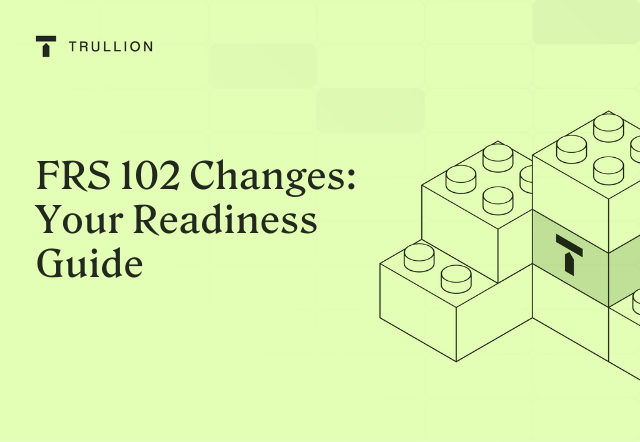Introduction
UK GAAP is changing significantly, and it’s crucial to understand these updates and how they will affect you.
We’ve created this Guide to help you prepare for the amendments, including steps to take now to ensure you’re ready by the implementation date.
FRS 102 and FRED 82: a primer
FRS 102, or UK GAAP, covers key aspects of accounting, such as presentation and disclosure, and accounting policies.
In an effort to bring FRS 102 (“The Financial Reporting Standard applicable in the UK and Republic of Ireland”) in line with International Financial Reporting Standards (IFRS), the issuers of FRS 102 – the Financial Reporting Council, or FRC – have issued these new guidelines.
Known as FRED 82, or “Financial Reporting Exposure Draft 82,” the proposed changes are set to have a significant impact on FRS 102.
The FRC originally issued FRED 82 in December 2022, with public comment welcomed until April 2023. The new standards are expected to be published in the first half of 2024, with the changes being effective for accounting periods starting from 1 January 2026.
Major areas of change
The main thrust of the proposed changes deals with revenue and leases, though incremental changes in other areas are also being introduced.
The goal is to provide high-quality, clear financial reporting to users, in line with the latest IFRS standards such as IFRS 15 “Revenue from Contracts with Customers” and IFRS 16 “Leases”.
For IFRS 15, FRS 102 is expected to reflect the 5-step model for revenue recognition, while regarding IFRS 16, FRS 102 is expected to use the “on balance sheet” model instead of having lease payments expensed through the income statement.
Other areas that are being updated though to a lesser extent include:
- More clarity for small entities in the UK applying Section 1A
- A revised Section 2 to reflect the IASB’s Conceptual Framework
- A new Section 2A “Fair Value Measurement”
Here is a summary of the changes, and the transition required:
Revenue
Reflecting IFRS 15, the 5-step model should be used:
- Identify contracts with customers
- Identify separate performance obligations
- Determine the transaction price
- Allocate the transaction price
- Recognise revenue when the performance obligation is satisfied
Areas to watch out for include:
- Variable considerations such as discounts and rebates
- Goods and services being bundled together
- Taking the time value of money and financing considerations into account
- Contract modifications
There are certain simplifications from IFRS 15, which is a relief as the standard can be complex and challenging to implement. These include simplifications around policy choices, license revenue, and the option to apply the 5-step model to a portfolio of homogeneous contracts.
Moreover, no restatements of prior year comparative amounts are required, and the changes need only be applied to open contracts from the transition date and onwards.
Leases
Like IFRS 16, entities must now create a Right-of-Use (ROU) asset and corresponding lease liability. This also means that lease expenses will be reflected as depreciation and interest, which is likely to impact key financial metrics.
Like IFRS 16, certain exemptions are available, for example when it comes to short-term and low-value leases.
Like with Revenue Recognition, there are some simplifications proposed. For example, more leeway in calculating the discount rate, and dealing with multiple components in a single lease.
Similar to IFRS 15, no restatements of comparative figures are necessary, and there is an option to use carrying amounts from group reporting per IFRS 16 as opening balances.
The effects of applying this standard initially should be made as an adjustment to retained earnings.
Steps to take now
Given the scope of these changes, key ratios and metrics are likely to be affected, including EBITDA and net profit. This can have a knock-on effect when it comes to covenants with banks and other loan providers, employee bonus schemes, dividends, insurance coverage, and multiple other areas.
It’s therefore critical to ensure you’re properly prepared for these changes, and can plan for what the impact will be for your business.
Right now, these steps can help you meet the transition deadline and ensure you’re on the front foot come the effective date:
- Perform an impact assessment: what areas of your business are likely to be affected?
- Communicate with key partners and stakeholders
- Consider how internal processes will need to change
- Implement appropriate accounting software early
This last point is particularly important, as it has been shown to solve the vast majority of implementation problems, while providing increased visibility and productivity.
Thousands of companies that have had to comply with IFRS standards on leasing and revenue recognition have added specialized modern accounting software to effectively deal with these areas, and remain constantly compliant without the headache.
Trullion is a leader when it comes to modern AI-powered automated accounting software, and the Trullion team pride themselves on walking clients through the initial integration and providing ongoing support.
The new FRS 102 is upon us
The upcoming changes to FRS 102 are significant, but with the right preparation, businesses can take these in their stride.
To learn more about how other companies have successfully used Trullion’s accounting oversight platform to simplify revenue recognition and lease accounting, and to see the product in action for yourself, reach out to the Trullion team.





